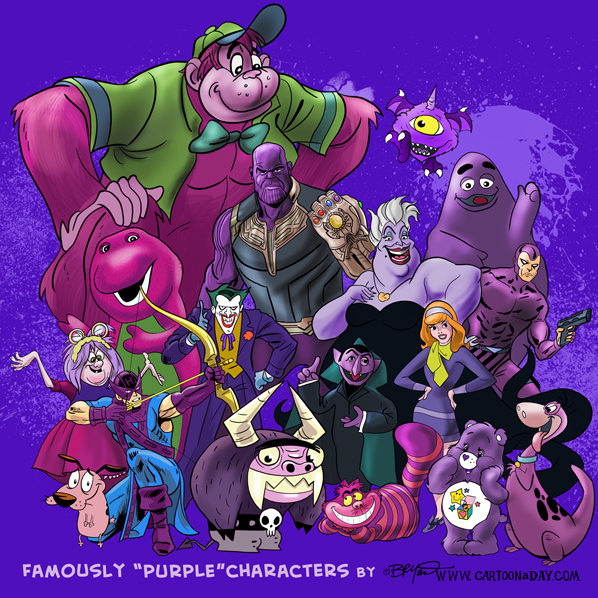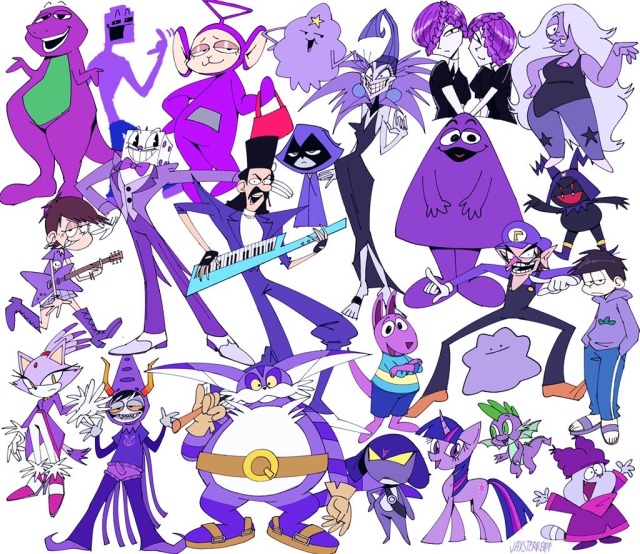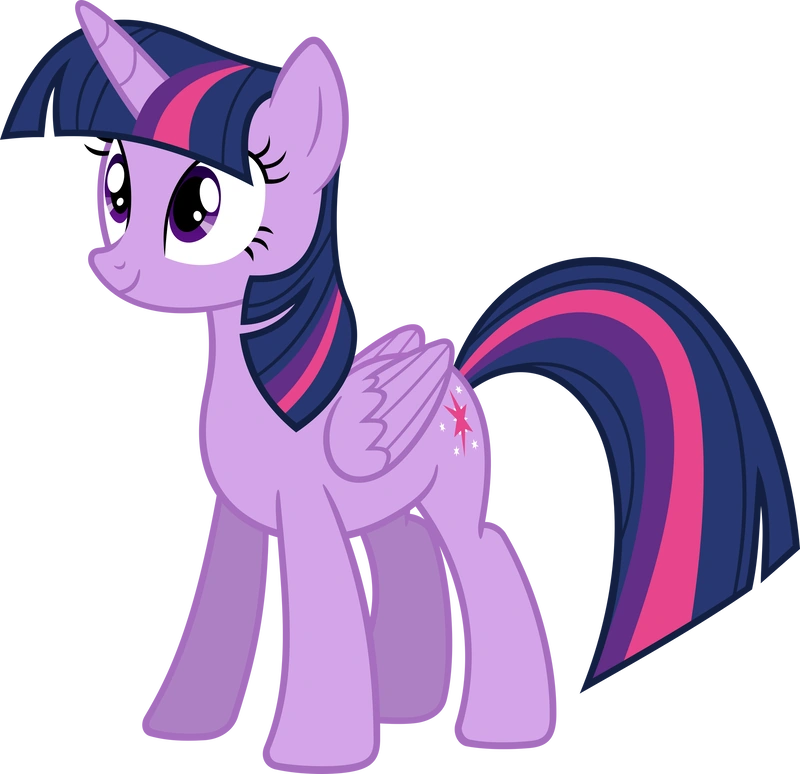Ever wondered why purple characters have become such a big deal in pop culture and storytelling? From iconic anime figures to legendary video game heroes, these vibrant violets have carved out their own special place in our hearts. Today, we're diving deep into the world of purple characters, exploring what makes them so unique and why they resonate with audiences worldwide. So, grab your favorite drink, and let's get started on this wild ride!
Purple has always been associated with royalty, mystery, and a touch of the extraordinary. When it comes to characters in movies, games, or comics, this color adds an extra layer of intrigue that instantly captures our attention. But why exactly does purple work so well? And what kind of stories do these characters tell? Let's break it down.
As we journey through the realm of purple characters, you'll discover how their design, personality, and backstories make them unforgettable. Whether you're a fan of anime, video games, or even classic literature, there's something for everyone here. So, buckle up and let's explore the magic of purple characters together!
Read also:Bad Bunny Hand Tattoo The Story Behind The Ink
Why Purple Characters Stand Out
Color Psychology and Its Impact
Purple is more than just a color—it's a statement. In the world of psychology, purple is often linked to creativity, luxury, and spirituality. When a character sports purple tones, it immediately suggests that they're not your average hero or villain. They're complex, layered, and full of surprises.
Think about it: when you see a character dressed in purple, your brain automatically starts making assumptions. Are they mysterious? Are they powerful? Or are they just plain cool? The answer is usually all of the above. And that's why purple characters leave such a lasting impression.
Breaking Stereotypes with Purple
For a long time, media has relied on stereotypes to define characters. But purple characters break those molds. They challenge the norm and invite us to see things differently. Whether it's a villain with a heart of gold or a hero with questionable methods, purple characters are all about defying expectations.
This defiance is what makes them so appealing. In a world where we're constantly bombarded with the same old tropes, purple characters offer a breath of fresh air. They remind us that not everything is black and white—and that's a powerful message.
The Role of Purple Characters in Storytelling
From Villains to Heroes: The Evolution
In the early days of storytelling, purple was often reserved for villains. Think Maleficent from "Sleeping Beauty" or the evil queen in "Snow White." These characters were designed to be intimidating, their purple attire adding to their aura of menace.
But over time, purple characters began to evolve. They became more than just the bad guys. Today, you'll find purple characters in every role imaginable—from the lovable sidekick to the reluctant hero. This evolution reflects our changing perceptions of what a character can and should be.
Read also:Love Quotes By Socrates Exploring The Philosophers Timeless Wisdom
Purple Characters in Anime and Manga
Anime and manga have embraced purple characters wholeheartedly. From Naruto's Pain to Attack on Titan's Zeke Yeager, these characters have become cultural icons. What makes them so special is their depth. They're not just one-dimensional figures; they're complex beings with rich backstories and motivations.
Take, for example, Lelouch Lamperouge from "Code Geass." His purple hair and outfit aren't just for show—they symbolize his royal lineage and his ambition to change the world. Through characters like Lelouch, anime has shown us that purple isn't just a color—it's a statement.
Iconic Purple Characters in Pop Culture
Video Game Legends
Video games have also given us some of the most memorable purple characters. Think of Kratos from "God of War," whose purple armor speaks volumes about his strength and resilience. Or Sonic's arch-nemesis, Dr. Robotnik, whose purple demeanor perfectly matches his eccentric personality.
These characters don't just look cool—they play a crucial role in the narrative. Their purple design helps them stand out in a crowded game world, making them instantly recognizable. And let's be honest, who doesn't love a character that looks as good as they fight?
Comic Book Heroes and Villains
Comic books have always been a playground for purple characters. From Marvel's Purple Man to DC's Amethyst, these characters bring a splash of color to the pages. What's interesting is how they're often used to explore deeper themes.
Purple Man, for instance, is a villain with a tragic backstory. His use of mind control isn't just a plot device—it's a commentary on power and manipulation. Meanwhile, Amethyst is a hero with a strong sense of justice, proving that purple characters can be both good and bad.
The Psychology Behind Purple Character Design
Why Designers Love Purple
For character designers, purple is a dream come true. It's versatile, eye-catching, and packed with meaning. Whether it's used for a character's outfit, hair, or accessories, purple adds an extra layer of intrigue that draws the audience in.
But it's not just about aesthetics. Designers use purple to convey specific messages about a character. Is the character mysterious? Use darker shades of purple. Are they playful? Opt for lighter tones. The possibilities are endless, and that's what makes purple such a powerful tool in character design.
The Impact of Purple on Audience Perception
When audiences see a purple character, their perception is instantly shaped by the color. They might assume the character is powerful, intelligent, or even a little bit dangerous. And that's exactly what designers want. By using purple strategically, they can guide the audience's understanding of a character without saying a word.
But perception isn't just about the color itself. It's also about how purple interacts with other elements of the character's design. For example, a purple outfit paired with sharp lines might suggest a villain, while softer lines could indicate a hero. It's all about balance and context.
Biography: Famous Purple Characters
Data and Biodata
Here's a quick look at some of the most famous purple characters in pop culture:
| Name | Origin | Role | Notable Traits |
|---|---|---|---|
| Lelouch Lamperouge | Code Geass | Anti-Hero | Purple hair, strategic mind, royal lineage |
| Dr. Robotnik | Sonic the Hedgehog | Villain | Purple attire, eccentric personality, love for gadgets |
| Amethyst | DC Comics | Hero | Purple gemstone powers, strong sense of justice |
Long-Tail Keywords and Variations
Exploring the Depth of Purple Characters
While "purple characters" is our main keyword, there are plenty of variations to explore. For example, "purple anime characters" or "famous purple villains" can help us dive deeper into specific niches. These long-tail keywords not only improve SEO but also provide more targeted information for readers.
By incorporating these variations naturally into the content, we can ensure that our article reaches a wider audience. After all, not everyone searches for things the same way. Some might be looking for "purple heroes," while others might be interested in "purple character design." It's all about meeting the reader where they are.
The Cultural Significance of Purple Characters
Breaking Down Barriers
Purple characters have played a significant role in breaking down cultural barriers. In a world that often values conformity, these characters celebrate individuality and uniqueness. They remind us that it's okay to be different and that our differences are what make us special.
Moreover, purple characters often tackle important social issues. From gender roles to mental health, they provide a platform for discussing topics that might otherwise be ignored. This cultural significance is what makes them so important in today's media landscape.
Conclusion: The Magic of Purple Characters
As we wrap up our journey through the world of purple characters, it's clear that they hold a special place in our hearts. Whether they're heroes, villains, or something in between, they offer us a glimpse into the extraordinary. Their design, personality, and backstories make them unforgettable, and their impact on culture is undeniable.
So, the next time you come across a purple character, take a moment to appreciate what they represent. They're more than just pixels or ink on paper—they're symbols of creativity, individuality, and the power of storytelling. And who knows? Maybe you'll find your new favorite character in the process.
Now, it's your turn! Share your thoughts in the comments below. Who's your favorite purple character? Or maybe you have a story about how a purple character changed your life. Let's keep the conversation going!
Table of Contents


